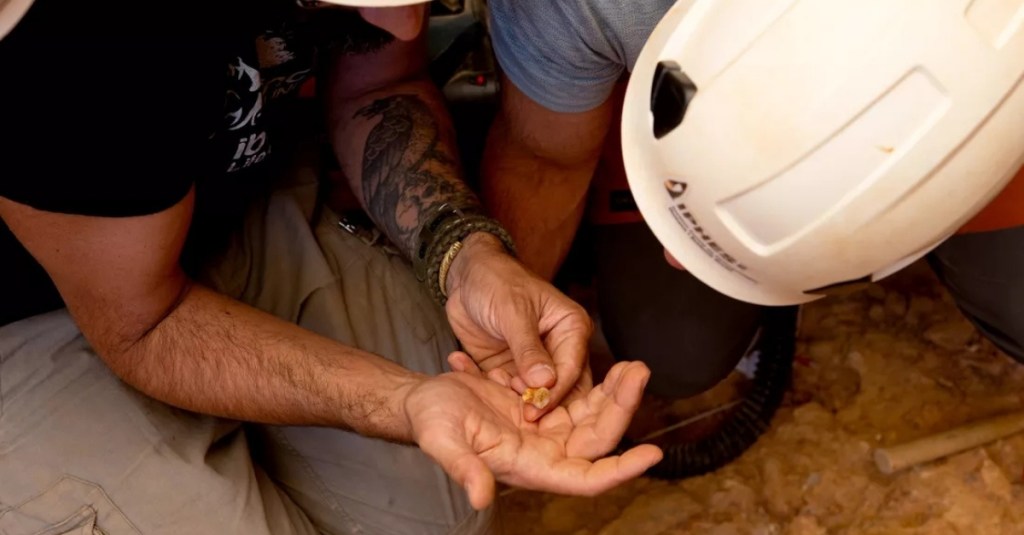Ancient Cannibalism Unearthed: The Gruesome Discovery of Child Consumption 850,000 Years Ago.
In a revelation forcing a dramatic rethink of human evolution, Spanish archaeologists have uncovered chilling evidence that human ancestors engaged in child cannibalism 850,000 years ago.
IN BRIEFINTERNATIONAL
Thinkbrief
7/23/20252 min read


They find a small neck bone belonging to a child aged between two and four surfaced at the Gran Dolina cave in Atapuerca, northern Spain. It bears unmistakable, deliberate cut marks: wounds left not by accident but by stone tools wielded with practiced precision at the child’s vertebrae, suggesting intentional decapitation and systematic butchery. The verdict is stark. In this Paleolithic corner of Europe, young children were not just mourned; they were eaten.
The backbone of this grim story lies in a fragment of human cervical vertebra, newly excavated during a season that has already yielded ten skeletons, remnants of a forgotten population. Analysis reveals incisions at anatomical points optimal for separating the head from the torso, along with defleshing grooves identical to those found while butchering animals for meat. The prey this time was a toddler, their bones treated as game, their flesh likely consumed without ceremony. Dr. Palmira Saladié, a leading paleoanthropologist and co-director of the Gran Dolina dig, explains that this case is particularly striking, not only because of the child’s age but also due to the precision of the cut marks. The vertebra presents clear incisions at key anatomical points for disarticulating the head. It is direct evidence that the child was processed like any other prey.
The child belonged to Homo antecessor, a species thought to straddle the ancestral line between Homo sapiens and Neanderthals. These ancient hominids were stockier and shorter than modern humans and inhabited Western Europe between 1.2 million and 800,000 years ago. Their brains were smaller, yet their behavior was startlingly methodical. Over three decades of digging, archaeologists have unearthed roughly thirty skeletons at Gran Dolina. Astonishingly, nearly one-third of these show scars of cannibalism, including slicing, smashing, bite marks, and intentional fractures that left the marrow exposed. This is not sporadic violence driven by desperation. It is the systematic harvesting of meat, sometimes from children.
Understanding the reasons behind these acts remains elusive. Some scientists theorize that competition for resources in colder climates or seasonal scarcity may have driven groups to consume their own kind. Others speculate that cannibalism served as territorial control, making gruesome examples out of rival groups. However, the sheer repetition suggests a survival strategy rather than a singular tragedy. Saladié emphasizes that what is documented now is the continuity of that behavior; the treatment of the dead was not exceptional but repeated.
The Gran Dolina cave is rewriting Europe’s early history. The bones mark the first definitive evidence of human cannibalism on the continent and push back the timeline of prehistoric human settlement there. Some discoveries at other sites worldwide suggest cannibalism may stretch even farther into humanity’s past, but none are as clear-cut or chilling as these remains of systematically butchered toddlers and children.
Despite the discovery, the broader context remains shadowy. It is unclear whether the consumed child came from an enemy clan or their own community, and whether the acts were sporadic responses to famine or normalized as part of daily life. For now, the evidence answers only the basic questions of who and how, not why. Yet with every find at Atapuerca, the narrative deepens, painting a portrait of our ancestors as both ingenious survivors and, at times, pitiless predators.
These discoveries resonate beyond the scientific community and stir unease in the modern imagination. The revelation shatters sanitized images of early humans and underlines a hard truth: survival, at its rawest, has always walked hand in hand with horror. As archaeologists continue their work at Gran Dolina, each trowelful of earth peels back not only the soil of Spain but also the ancient, troubled conscience of our species.

